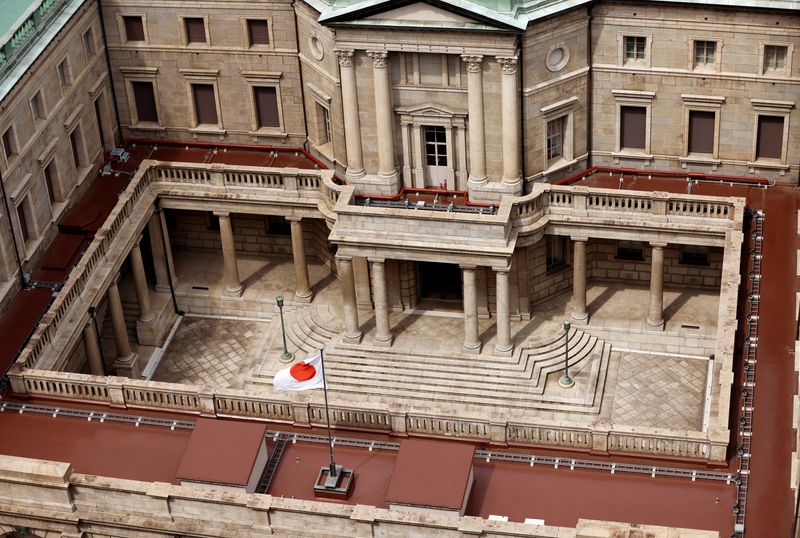By Leika Kihara
TOKYO (Reuters) – Japan’s central bank is likely to end the year as one of the world’s most dovish, as policymakers look for clues on whether the economy can weather overseas risks and achieve a sustained price and wage growth.
With consumption showing signs of weakness and next year’s wage outlook still uncertain, the Bank of Japan is widely expected to maintain its ultra-loose policy settings next week.
Markets are instead focusing on any hints Governor Kazuo Ueda may offer at his post-meeting briefing on the timing of an exit from negative interest rates.
“Next year’s wage talks will likely turn out fairly strong, but the BOJ probably needs a bit more time to determine whether inflation becomes driven more by domestic demand,” said Shigeto Nagai, head of Japan economics at Oxford Economics.
“The most likely timing of an exit is in April, after which the BOJ will probably guide short-term rates in a range of zero to 0.1%,” said Nagai, a former BOJ official.
At a two-day meeting ending on Tuesday, the BOJ is expected to make no major changes to its policy that guides short-term interest rates at -0.1% and the 10-year bond yield around 0%.
While the BOJ’s quarterly “tankan” survey underscored the strength of Japan’s corporate sector, some policymakers point to weak signs in consumption and global economic uncertainties as factors that warrant maintaining the status quo.
“We’re seeing some positive signs on the wage outlook. But we’ve yet to see evidence that wages will indeed rise broadly,” said a source familiar with the BOJ’s thinking, a view echoed by two other sources.
Ueda has repeatedly said the BOJ should keep ultra-easy policy until the recent cost-driven inflation turns into price rises driven more by robust consumption and higher wages.
But a sharply changing global monetary policy environment may complicate the BOJ’s decision with U.S. and European central banks signalling that they are done hiking rates.
The Federal Reserve on Wednesday flagged the chance of several rate cuts next year which, coupled with a rate hike in Japan, could sharply reverse the yen’s downtrend.
While BOJ officials play down the impact the Fed’s move could have on their policy decisions, any spike in the yen could hurt big manufacturers’ profits and discourage them from hiking wages, some analysts say.
There is no consensus within the BOJ on the timing of an exit with the nine-member board divided on how long they should wait in determining that Japan will see inflation durably achieve the bank’s 2% target, accompanied by solid wage gains.
More than 80% of economists polled by Reuters in November expect the BOJ to end its negative rate policy next year with half of them predicting April as the most likely timing. Some see the chance of a policy shift in January.
“The key is how much the BOJ will try to signal the chance of a policy change in January,” said Naomi Muguruma, senior market economist at Mitsubishi UFJ Morgan Stanley Securities.
(Reporting by Leika Kihara. Editing by Sam Holmes)
